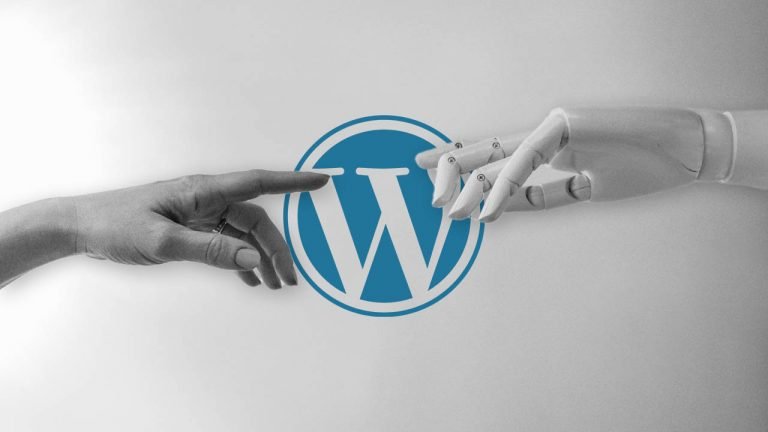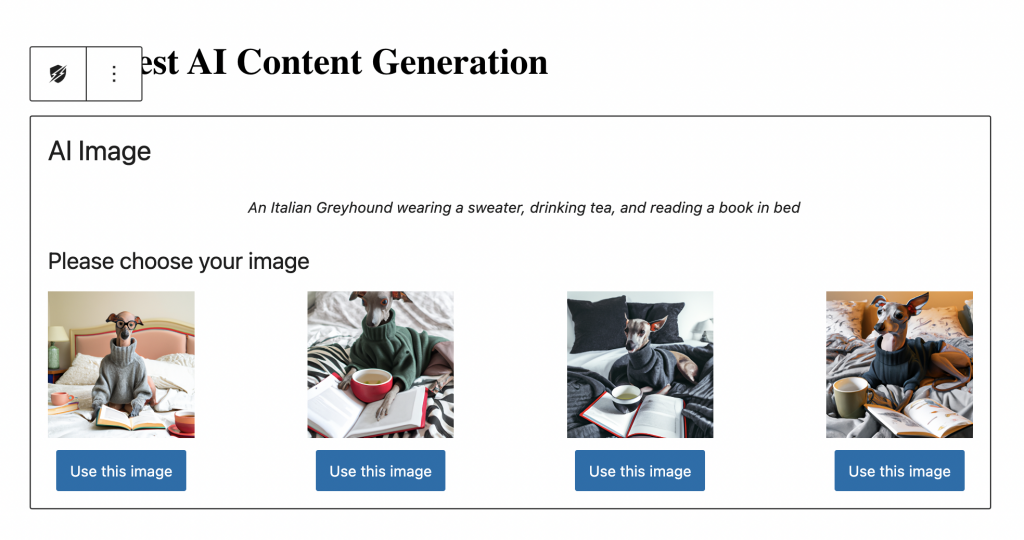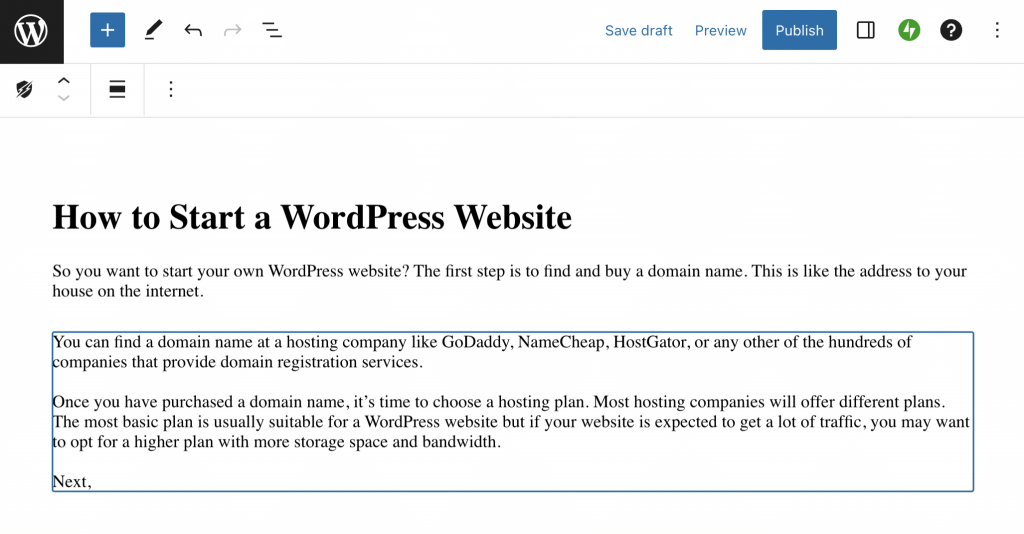
WordPress.com, one of the world’s most popular website creation platforms, is currently experimenting with AI-generated images and content.
The company is using GPT-3, one of the most advanced language models available, to generate high-quality images and content for websites. The goal is to help website owners create high-quality content and visuals with less effort and time.
This experiment can potentially revolutionize how content and visuals are created for websites. With AI-generated content, website owners will have the ability to produce high-quality visuals and written content without requiring specialized skills or training.
The AI-generated content and visuals will not replace human creativity and originality but rather, it will be a tool to help speed up the creative process. Website owners can use the AI-generated content and visuals as a starting point, then edit and add their own personal touch to make it unique.
The use of AI-generated content and visuals is not without concerns. Some people worry that the use of AI-generated content will lead to a loss of jobs for writers and graphic designers. However, WordPress.com sees this as an opportunity to provide a new tool for creators to enhance their productivity, not to replace them.
WordPress.com’s experiment is a step forward in using AI in website creation. It is exciting to see how AI technology can be used to make website creation more accessible and efficient for all.
WordPress.com is presently testing two new blocks that use AI to generate graphics and paragraph text. Jen T of WPcomMaven discovered the blocks, which are now categorized as experimental, and shared a few samples on her blog.
WordPress.com created the blocks in collaboration with OpenAI, the makers of ChatGPT and DALLE. In a post on the WordPress.com support forums, Automattic programmer Artur Piszek provided a brief summary of the experimental blocks, dubbing the new feature “Jetpack AI – your writing helper on WordPress.com.”
we put both blocks through their paces, beginning with the picture generator. Users enter a question in a basic user interface, and the block creates four pictures that may be enlarged before selection. Here are a few of these instances:


we weren’t particularly impressed with the images, which appeared blurry and ill-conceived at times. Some had an almost sadistic resemblance to the prompts, with photos of live creatures and humans faring poorly in comparison to images of inanimate items. Faces are frequently deformed, with what looks to be flesh melting away. Unless a person is really talented at designing the prompts, they may have difficulty obtaining any usable photographs.
The AI-generated paragraphs provide a somewhat better experience, but they require more flexibility. Based on your existing content, the block will produce new paragraphs. It performs a good job, but it would be more beneficial if you could start from a blank page and provide it a prompt instead, as one of the key advantages of employing AI for content generation is that it can provide a starting point from which the writer may enhance.

The text may be refined further by converting the block to a paragraph. This is not obvious and should be highlighted more prominently in the UI.
“We were thinking about making the block completely editable, and I realize that we may need to offer a more intuitive editing experience,” Piszek stated after analyzing forum input.
When utilizing this experimental paragraph-generating block, users should be aware of how AI-generated material might affect their search rankings. Google recently issued guidance stating that it will reward high-quality content regardless of how it is produced, but warns that “those seeking success in Google Search should look to produce original, high-quality, people-first content demonstrating qualities E-E-A-T (expertise, experience, authoritativeness, and trustworthiness).” When employing automation, this is not always achievable.
The AI-generated content blocks on WordPress.com are in the early phases of testing and are not guaranteed to be publicly released or included in Jetpack. The blocks may be helpful with some modifications, but they will almost certainly be provided only to paying users, as the expenses of AI-generated processing resources may soon add up.
“AI models and technologies are sometimes unexpected,” added Piszek. “We want to be cognizant of how those tools behave, what influence they have on your creativity, and how we can make them help you.
“At the same time, we are still learning and adjusting, so please bear in mind that these features may alter or disappear at any time.
“Once they are announced, they will very certainly be paid extra (on top of existing plans) depending on how much we have to pay OpenAI for their services.”
Users of WordPress.com who try out the experimental blocks are urged to offer feedback in the announcement thread.
Pros
AI-generated content and images can save time and effort. Instead of spending hours creating content and graphics from scratch, website creators can use AI-generated content as a starting point and modify it to suit their needs. This will help to speed up the content creation process, which can be particularly useful for businesses that need to create a lot of content quickly.
Second, the use of AI-generated content and images can also help to reduce the costs associated with creating high-quality visuals and written content. Hiring graphic designers and professional writers can be expensive, but using AI-generated content and images can be a cost-effective way to create high-quality content without breaking the bank.
Finally, AI-generated content and images can help to increase the quality of website content. The use of AI technology can help to ensure that website content is well-written, grammatically correct, and visually appealing. This can improve the overall user experience of the website, which can lead to increased engagement and more positive outcomes for the website owner.
Overall, the use of AI-generated content and images has the potential to make work easier, faster, and more cost-effective for website creators.
Cons
While AI-generated images and content can offer many benefits for website creation, there are also potential drawbacks to consider. One significant issue is the lack of creativity that AI-generated content may exhibit. While it can serve as a helpful starting point, this content may feel formulaic and uninspired, which could ultimately affect the quality of the website.
Inaccuracy is also a concern when it comes to AI-generated content, particularly for topics that are nuanced or complex. This could be particularly problematic for websites that provide health or legal advice, as inaccuracies could lead to serious consequences.
Another concern is the overreliance on technology, which could result in website creators losing touch with their audience and producing disconnected or irrelevant content. Ethical considerations also come into play with the use of AI technology, particularly when it comes to issues like privacy and data protection. It is crucial for website creators to ensure that their use of AI technology is ethical and transparent.
While the potential for job displacement is also a concern, it is essential to find a balance between using AI-generated content to enhance productivity and creativity and maintaining opportunities for human professionals in fields like writing and graphic design. In summary, while AI-generated images and content can offer many advantages for website creation, it is essential to be aware of potential drawbacks and use this technology in a responsible and ethical manner.
